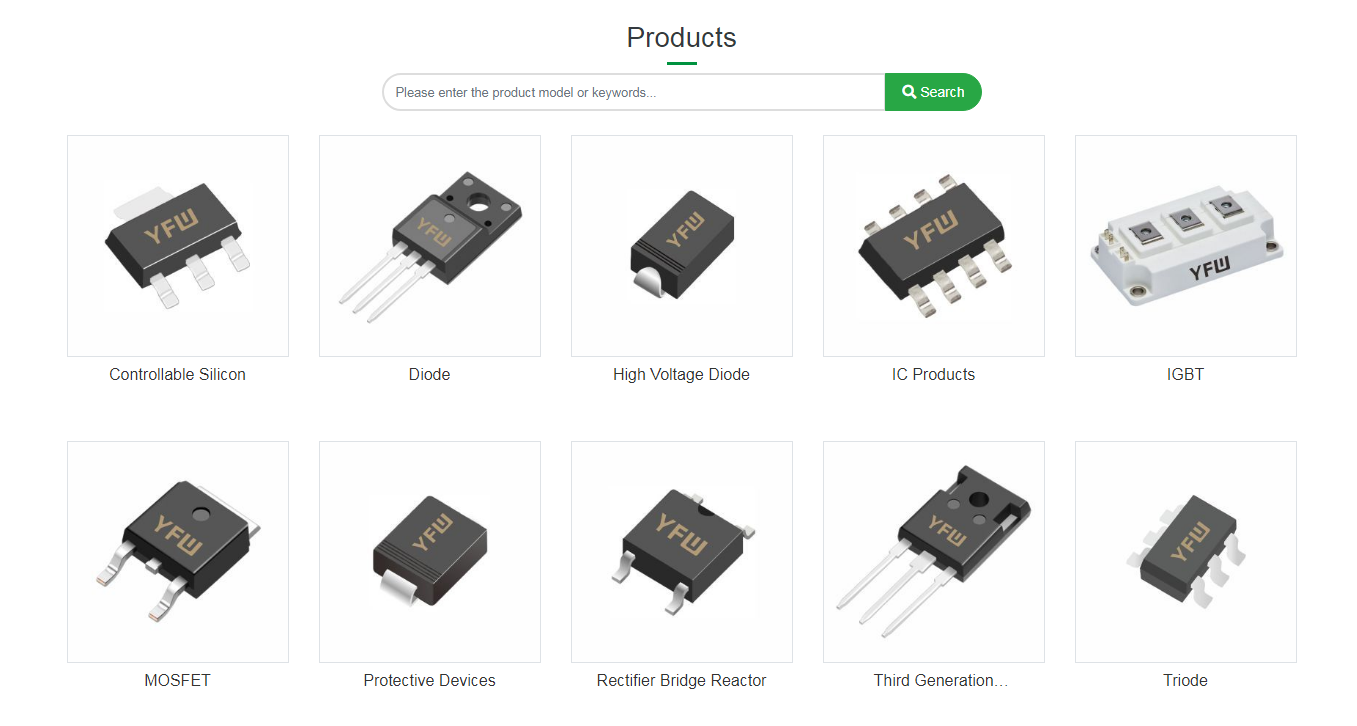Date:2025-03-18 Categories:Industry News Hits:918 From:Guangdong Youfeng Microelectronics Co., Ltd(YFW)
A germanium diode is a diode made of germanium (Ge). Germanium is a common semiconductor material, which has a lower band gap (about 0.67 eV) and was used earlier than silicon (Si) to manufacture semiconductor. The following will introduce the basic structure, performance parameters, working principle, application examples, difference between germanium and silicon diodes, and the development history of germaniumodes in detail. 1. Basic structure: The basic structure of a germanium diode includes two regions, namely the N-type and P-type regions The germanium material in the N-type region is doped with impurities, making it the main source of electron carriers. The germanium material in the P-type is doped with another impurity, making it the main source of hole carriers. The junction formed between the two regions is called a PN junction. The PN junction is formed by doping proper amount of impurities into the germanium material. 2. Performance parameters: 1. Forward voltage (Forward Voltage): A germanium diode can conduct when a forward voltage is applied. Its forward voltage is generally 0.2V-0.3V, which is lower than the typical forward voltage of a silicon diodeabout 0.6V). 2. Maximum reverse voltage (Maximum Reverse Voltage): A germanium diode should have a certain degree of anti-break capability under reverse voltage. Its maximum reverse voltage is generally 30V-60V. 3. Maximum forward current (Maximum Forward Current): A germanium di should have a certain carrying capacity under forward current. Its maximum forward current is generally 100mA-500mA. 4. Reverse recovery time (R Recovery Time): When the germanium diode changes from conduction to cutoff, its PN junction needs a certain amount of time to recover. This time is called the reverse recovery time 3. Working principle: The working principle of a germanium diode is similar to that of other diodes. When a forward voltage is applied to the PN of the germanium diode, due to the special structure of the PN junction, electrons in the N-type region diffuse towards the P-type region, and holes in P-type region diffuse towards the N-type region. This diffusion phenomenon leads to the formation of a depletion layer near the PN junction, where there are almost no free charge carriers can move freely. When the forward voltage reaches a certain value, the depletion layer disappears, and current begins to flow through the diode, which is turned on. When a reverse is applied to the PN junction of the germanium diode, the depletion layer widens, and current can hardly pass through, which is turned off.

Previous:What is a Transient Voltage Suppression Diode and its basic, and market prospects?
Next:NZT560A 1A 80V SOT-223 Marked NZT560A Small Signal Transistor Y Micro Brand